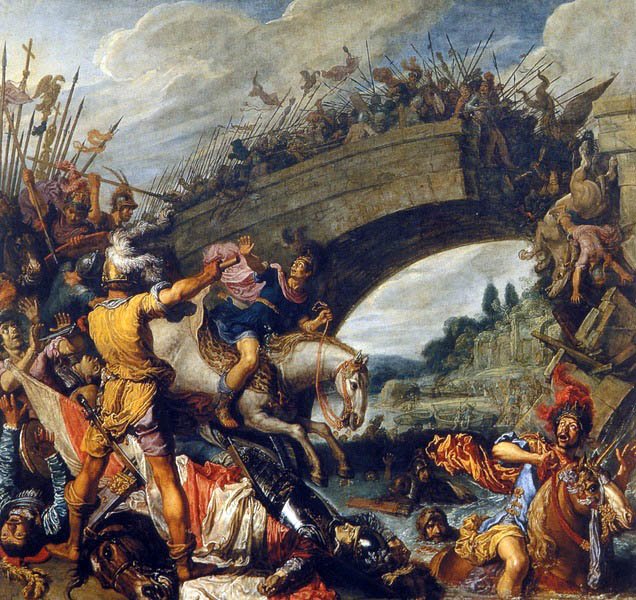- IdeologyPolitics
- 30 de April de 2024
- No Comment
- 5 minutes read
Paleo-Christian ‘Neopedagogists’

Paleo-Christian ‘Neopedagogists’


The Battle of the Milvian Bridge in 312 AD was an essential moment for Constantine I the Great. Legend has it that Constantine and his forces saw a cross of light in the sky, leading the emperor to inscribe this Christian symbol on all his soldiers’ shields. When he won the battle and assumed the role of Western Roman Emperor, he attributed his victory to the Christian God. This event led to Constantine and Licinius, the co-emperor, agreeing on the Edict of Milan in 313 AD, a kind of LOGSE of that era. This edict aimed to establish a common policy to end disputes between pagans and Christians, or ‘teachersaurians’ and ‘neo-pedagogists’. While the former adapted their practices according to contexts, the latter resisted worshipping any divinity other than their own. The edict was intended to bring peace through freedom of conscience. However, the early Christians, similar to the ‘neo-pedagogists’ in the LOGSE and subsequent laws, gained more benefits than the pagans, leading to their eventual dominance.
The Edict of Milan, akin to the LOGSE, marked the beginning of the expansion of a dogmatic ideology. It granted early Christians the full authority to impose their faith. Once the system adopted Christianity, these early Christians began to demolish pagan temples, tear down statues of gods, mutilate reliefs, remove frescoes and mosaics, burn libraries, cut down sacred forests, and scrape Greco-Latin parchments to write prayers. The expansion of this ideology attracted more followers as they enjoyed greater privileges from the government. Furthermore, paleo-Christianism was simple and did not require extensive thought or memorisation; faith alone was needed to attain eternal Paradise. Fear of a sentence was instilled if they were contradicted, as their dogma demanded exclusivity and intolerance towards other practices. In such a context, intolerance was seen as virtuous. Forcing another to be saved was considered good, as was destroying all pagan idols believed to contain a demon. To neutralise this perceived “evil”, they destroyed or demolished everything previous, defending their innovation as superior. In 392 AD, Bishop Theophilus ordered the demolition of the Serapis temple in Alexandria and the burning of the books in its nineteen library rooms, leading to the loss of classical pagan knowledge. These early Christians believed that wisdom was silliness, asking why one should seek knowledge if it does not save the soul? They believed that faith was enough because knowledge hinders salvation, akin to the notion that memorisation is foolishness, and why seek knowledge if everything is on the Internet? Faith is enough because memorising hinders education.
Thus, these Church fathers replaced philosophy with a “theology” through power, pressures, and propaganda. Over time, new laws and edicts were promulgated that plagiarised and expanded the first ones, condemning the pagans to be overthrown. LOGSE, LOCE, LOE, and LOMLOE are examples of this and have signified the end of centuries of knowledge from Socrates to Damascius to impose a single dogma, but at the cost of burning the rest.
Before the establishment of paleo-Christianism as the exclusive official religion, various other cultured cults existed. The Christian dogma was imposed through baptism or obligation, leading to its expansion through manipulation and oppression. Contrary to popular belief, it did not proliferate due to its progressive stance or advancement in human rights. According to surviving texts from dogmatic oblivion, such as those by Gregorio Luri, Andreu Navarra, and Alberto Royo, there is no historical evidence that early Christianity promoted freedom of cultured cults, as it prohibited the worship of all previous practices.
In essence, Europe became predominantly paleo Christian and ‘LOGSE-ian’ because the dogmatic eradicated pagan culture, and Constantine’s Empire, which remained in power for thirty years, was sufficient to establish a lasting cult, consolidate a project, and even weaken the system, as warned by PISA. Interestingly, Emperor Julian, akin to some educational figures in power today, was educated under this dogmatism but rejected it due to its superstitions and ignorance. Consequently, Julian returned to Hellenic cults and Greek philosophy. However, his brief reign did not have a lasting impact, and most of his works were forgotten by the early Christians. Today, ‘neo-pedagogy’ has been with us for over thirty years, a homeopathic dogma that relies solely on faith and means, rather than scientific-technical arguments. At times, I find myself questioning whether I am in the 4th century of the early Christians or in the 21st century of the ‘neo-pedagogists’. Perhaps we are simply trapped in a black hole, repeating the same mistakes.
Source: educational EVIDENCE
Rights: Creative Commons

